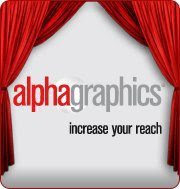A little over 10 years ago, a company called Rocket eBooks introduced an eBook reader device that was, by today’s standards, pretty clunky and limited in its capabilities. Though apparently many of these devices were sold—at a price of about $400 each—the most notable response to them was the hue and cry from book publishers worried about protecting their copyrights. Committees were formed to discuss these protections and to devise standards. Adobe and other software firms proposed solutions.
Yet eBook readers never seemed to catch on with the public. No matter how paper-like, bookmarkable and otherwise adjustable the eBook readers were, the only ones that readers seemed to like were those with teeny-tiny screens, inspiring the question: “How can anyone read anything on a screen that small?”
Some publishers even complied with eBook standards and requirements, including newspaper and magazine publishers, and those in niche markets, such as for scientific and technical reports and information. And wannabe-published writers never gave up the eBook concept. For them, eBooks provided a channel for publication that went around all the hassles of working with traditional trade book publishers.
Several years ago, online book (and everything else) retailer Amazon.com resurrected the whole idea of eBook readers with its Kindle device. The Kindle is sleeker and much more functional than earlier eBook readers. Kindle books are formatted in a way similar to that used for any mobile device, though the Kindle has its own special and proprietary kinks in the software.
Observers claimed that eBook readers had been available for years and few people used them. They were suspicious of Amazon.com’s claims that its inventory of Kindle readers sold out in a matter of weeks and that back-orders for the device were piling up. Since then, Amazon.com has introduced a second-generation Kindle reader—and now it has several competitors.
EBook readers also are available from Sony and Barnes & Noble, and a New York-based company named Skiff LLC launched the Skiff eBook at the 2010 Consumer Electronics Show (CES) in Las Vegas early this month. At the time of this writing, Skiff had just set off its public relations campaign, and the Internet was buzzing about the new reader, which uses a technology described as “a thin, flexible sheet of stainless-steel foil.” This new e-paper was developed by LG Display and offers image resolution of 1200x1600 pixels. It can also show images in color—something that apparently differentiates it from other eBook readers. Another notable feature of the Skiff reader is its size, at 11.5 inches, measured diagonally. And it’s only one-quarter-inch thick.
Most of the other eBook readers employ one variation or another of E-Ink technology, which is, in the most fundamental sense, tiny balls embedded in a substrate, black on one side and white on the other, and turning up the correct side on-demand to form the desired image. Skiff states that its new technology is more durable, and that it has an exclusive agreement with LG Display to use the new foil-based display. At its Web site, Skiff includes a pitch to book publishers, and the company also is working with telecommunications provider Sprint. The two firms have signed a multi-year agreement “to provide 3G connectivity for Skiff’s dedicated e-reading devices in the United States. Plans are underway to have the Skiff Reader available for purchase later this year in more than 1,000 Sprint retail locations across the United States, as well as online at www.sprint.com.”
Sprint’s new Emerging Solutions Business, launched in October 2009, apparently will be handling the relationship with Skiff.
Skiff added, “Besides the Skiff Reader, Skiff is working with major consumer electronics manufacturers to integrate Skiff’s service, digital store and client software into a range of innovative devices.” These will include “major smartphone platforms,” and probably whatever else becomes available.
The Skiff Reader is coming out on the heels of Barnes & Noble’s Nook eBook reader, which was offered just in time for Christmas—and which is now back-ordered for several months. Additionally, Sony’s Reader comes in three different models, including a small, low-cost ($199) version. Finally, unconfirmed rumors hint that Apple Inc. is working on a kind of “iTablet” eBook reader for release later this year. Apple refuses to comment one way or the other.
The question is—Why eBooks now rather than 10 years ago? The answer lies in the popular migration to cell phones, handheld personal assistants and texting capabilities over the past decade. More people are acclimatized to going totally electronic; eBook readers are simply the next new thing. And, even newly released best sellers cost about $10 in an eBook version, compared to more than $25 for traditional hardbound, or $12 to $15 for paperbacks. However, many publishers have announced plans to delay new releases in the eBook format to help drive printed book sales, so it remains to be seen how that will effect the market.
It’s taken a village to fully develop eBook readers and an audience for them, but apparently their time has come.



No comments:
Post a Comment